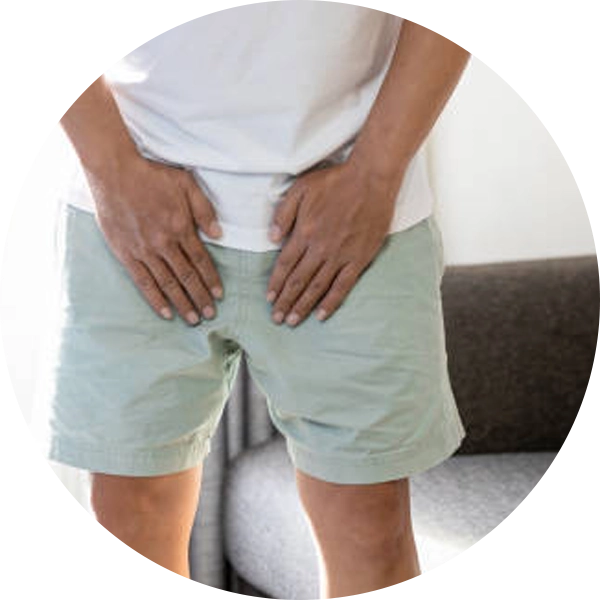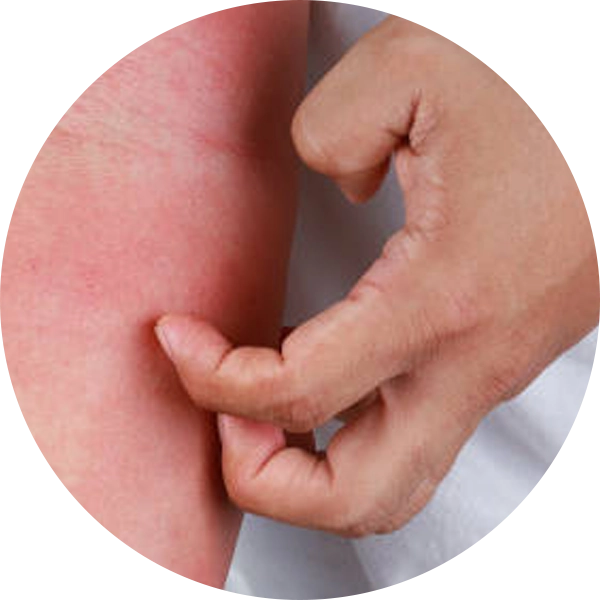A fistula is an abnormal, hollow tract that connects two organs or vessels that are not normally connected. In the context of anorectal diseases, it most commonly refers to an anal fistula—a small tunnel that develops between the end of the bowel and the skin near the anus. This condition usually forms as a result of an abscess (a collection of pus) in the anal glands that does not heal properly. Anal fistulas can cause persistent pain, swelling, and drainage of pus or blood.
In Ayurveda, a fistula is known as Bhagandara. The name is a combination of two words: ‘Bhaga,’ which refers to the perineal and anal regions, and ‘Dara,’ meaning a tear, split, or tract. This term accurately describes a disease that tears or creates a tract in the anal and perianal areas.
Ayurveda explains that Bhagandara is a complex disease caused by the vitiation of all three doshas, but it is primarily a Pitta- and Vata-dominant condition. The primary cause is a combination of poor digestion, an unhealthy lifestyle, and the suppression of natural urges. These factors lead to the accumulation of toxins (Ama) and the formation of an abscess in the anal region. When this abscess bursts, it creates a persistent, non-healing tract.


A sluggish metabolism leads to the formation of Ama. This undigested food and toxins settle in the body’s channels, including the anal region.

Repeatedly holding back the urges to urinate, pass stools, or release gas can lead to the vitiation of Vata, pushing it downwards and creating pressure in the anal area.

Consuming an improper diet, such as excessively dry or spicy foods, or irregular eating habits, can aggravate Pitta and Vata.

Consuming contaminated food can introduce toxins that settle in the body’s tissues.

Poor hygiene in the anal region can lead to bacterial infections and the formation of abscesses.

Can lead to local irritation and inflammation in the anal area.

Swelling
(Shotha)

Discharge
(Drava Srava)

Pain
(Ruja)

Itching
(Kandu)

Heaviness
(Gaurava)

Excessive Discharge
(Ati-Drava Srava)









An improper diet and a sedentary lifestyle lead to a weakened digestive fire (Mandagni).
The weakened Agni and improper habits lead to the aggravation of all three doshas, particularly Vata and Pitta.
The improper digestion leads to the formation of Ama (undigested toxins).
The vitiated doshas and Ama circulate in the body and settle in the perianal region. This obstructs the small channels and glands.
The obstruction causes a collection of pus and inflammation, leading to the formation of an abscess.
When this abscess bursts, it forms a non-healing tract or fistula, with an external opening on the skin and an internal opening in the rectum.
We begin with a detailed evaluation combining modern diagnostic tools with Ayurvedic assessments such as Prakriti (body constitution), Vikriti (current imbalance), dosha mapping, and lifestyle review. This dual lens helps us see the full picture of your health, beyond just the symptoms.
Ayurveda teaches us that diseases are born from underlying imbalances; not just isolated issues. We carefully study dietary habits, digestion (Agni), toxin accumulation (Ama), stress, and daily routines to uncover the true root cause of your condition.
No two patients are alike. Your treatment is tailored to your unique body type (Vata, Pitta, Kapha), disease stage, and co-existing conditions. This ensures maximum effectiveness and safety, while restoring balance at the deepest level.
Healing isn’t one-dimensional. Based on your needs, we combine:
This integrated approach ensures that body, mind, and spirit heal together.
Health doesn’t end with treatment. We equip you with home remedies, seasonal routines, lifestyle practices, and follow-up support to prevent relapse and help you sustain wellness for the long term.
Ayurvedic treatment for Bhagandara is aimed at cleansing the tract, reducing inflammation, and preventing recurrence. The treatment is a combination of internal medicines and external therapies.

Treatment focuses on local lubrication and nourishment.

Treatment focuses on cooling the system and reducing inflammation.

Treatment focuses on drying and draining the tract.

Fiber-rich foods to prevent constipation, such as whole grains, fresh fruits, and leafy vegetables. Drink plenty of warm water.

Spicy, oily, and fried foods. Avoid processed foods, junk food, and foods that are difficult to digest. Limit dry, cold, and gas-forming foods like cabbage and potatoes.
| Do's | Don'ts |
|---|---|
Maintain Regular Bowel Habits: Pass stools as soon as you feel the urge. | Avoid Straining: Do not strain during bowel movements. |
Stay Hydrated: Drink plenty of warm water throughout the day. | Avoid a Sedentary Lifestyle: Engage in regular physical activity. |
Maintain Hygiene: Keep the anal area clean and dry. | Don’t Suppress Natural Urges: Avoid holding back urges to pass gas or stools. |
Use a Squat Toilet: The squatting position facilitates easier bowel movements. | Avoid Prolonged Sitting: Get up and move around frequently. |
Activities like walking and swimming can help improve overall circulation and digestion.
Poses like Malasana (Garland Pose) can help relax the pelvic floor. Vajrasana (Thunderbolt Pose) can aid digestion.
Experience holistic healing and rejuvenation with Shree Ayurvedic, where traditional wisdom meets modern care for your health and wellness.





© 2025 Shree Ayurvedics. All Rights Reserved. Designed by Bee High Media